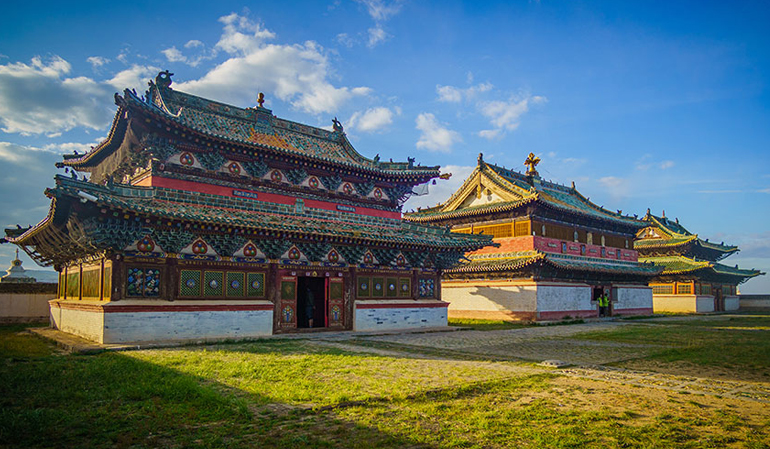Erdenezuu Monastery

Erdenezuu Monastery
The first Buddhist monastery in Mongolia, Erdene Zuu was established in 1586 on the ruins of ancient capital Kharkhorin, probably the most ancient surviving Buddhist monastery in Mongolia. Khalkha Mongolian ruler Abtai Sain Khan, a descendant of Genghis Khaan’s golden generation and grandfather of Zanabazar - the first spiritual leader Jebtsundamba Khutuktu , ordered the construction of the Erdenezuu Monastery in 1585 after he visited Tibet to meet with the 3rd Dalai Lama. Abtai Sain Khan brought Gombogur Buddha ( Sita Mahakala) as the main deity of Erdenezuu Monastery when he returned from Tibet and is still the monastery’s main shrine.400m by 400 m fortress wall surround the monastery - the wall bears evenly spaced white stupas, total of 108 which is sacred Buddhist number.
At its peak, the monastery had 62 temples, around 500 gers inside the walls, and 1000 monks in residence.
Later, the monastery was partially destroyed by the communists in 1937. The government protected the monastery between 1940 and 1965, then transformed into a museum in 1965 with no monks in residence. The religious activities again began in 1990 after the collapse of communism. In 1997, the government decided to restore the monastery, although most of it functions as a museum. Erdenezuu Monastery houses some of the most precious of Mongolia’s artifacts of 16th to 19th-century Buddhist masters, comprising of 3 large temples, one Tibetan style active temple, a big ger temple, stupas, the surrounding wall, some other small temples, and buildings.
The museum part consists of Three Zuu Temple (West Zuu Temple, Middle Zuu Temple, and East Zuu Temple) that are in a separate courtyard surrounded by a double brick wall. The double-wall is first to protect the monastery from the heat and second, for praying called “Goroo murgul”. The Three Zuu temples were praying temples than the chanting and flanked by Ayush and Tsamba temples in the same courtyard.
In front of the Three Zuu Temples are tombs of Abtai Sain Khan (1554-1588) and his grandson Tusheet Khan Gombodorj, father of Zanabazar.
Both Ayush and Tsamba Temples in the Three Zuu Temple courtyard have 3 rooms where 4 monks used to chant in each room, now houses invaluable arts of the 17th and 18th centuries such as appliques, tankas, and wall paintings.
There is a Bodhi Stupa/Large Stupa houses 155000 religious books, 70 small stupas, 2500 pyramids, 100000 Buddha figures, and numerous ritual items.
Further to the east is a 3-storey Tibetan style Lavrin Temple, which was built in 1875 and is a remodeling of the earlier version. This is a functioning temple where the monks function daily religious ceremonies.
Additionally, there is an active big ger temple near the golden stupa.

